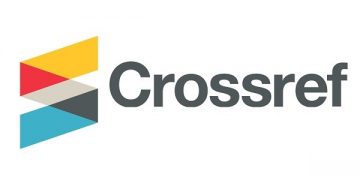AN ANALYSIS OF READING SPEED OF STUDENT IN BIMBEL ADZKIA PADANG
DOI:
https://doi.org/10.61722/jssr.v1i2.492Keywords:
Reading Comprehension, Reading Speed, Students.Abstract
The aim of this research is to determine reading speed and reading comprehension at Tutoring Adzkia Padang. This research method is a descriptive method. The population in this study were 101 Adzkia official tutoring students with a sample of 20 students. This research instrument is a text containing 20 questions. The results of this research were that 50% of students had a basic level of reading speed, 40% of students had an average level of adult reading speed and 10% of students had a level slightly above average reading speed with the majority of students at Bimbel Adzkia Padang having adult reading speed. Then, their reading comprehension level is that the average student is categorized as good in detail where 30% of students are categorized as having a very good level of reading comprehension, 30% of students have good reading comprehension, 10% of students are categorized as having average reading comprehension and 30% of students have a poor reading comprehension level and 0% of students have a very poor reading comprehension level. The conclusion of this research is that the average student has a reading speed in the adult reading speed category and reading comprehension in the good category.
References
Anderson, N. J. (2018). Practical English Language: Teaching Reading (Fifth). Mc-Grawhill.
Fraser, C. A. (2004). Reading with Fluency in a Second Language. The Canadian Modern Language Review/La Revue Canadienne Des Langues Vivantes.
Sugiyono. (2018). Sugiyono Metode Penelitian Kuantitatif Kualitatif. Metode Penelitian Kuantitatif Kualitatif.
Wainwright, G. (2012). How to Read Faster and Recall More. Howtobooks.
Whiteley, S. (2019). Memletics: Effective Speed Reading Course. Advonogy.
Linse, C. T. (2006). Practical English Language Teaching: English for Young Learners. In Language.
Journal
Afiyah, F. Al. (2022). The Correlation Student Reading Speed and Reading Comprehension Achievement of The Tenth-Grade Students in Indonesia. Jurnal VARIDIKA. https://doi.org/10.23917/varidika.v33i2.16428
Aldhanhani, Z. R., & Abu-Ayyash, E. A. S. (2020). Theories and research on oral reading fluency: What is needed? Theory and Practice in Language Studies. https://doi.org/10.17507/tpls.1004.05
Amir, A. (2023). Analysis of The Influence of Reading Speed and Reading Reference on Reading Comprehension Skills With Reading Strategy as Mediation Variables for Students at State University of Padang. JETL (Journal of Education, Teaching and Learning). https://doi.org/10.26737/jetl.v8i1.4428
Asra, S., & Juliansyah, R. (2021). The Application of Speed Reading Technique in Reading Activity for Students of Senior High School 1 Kluet Selatan. ELLITE: Journal of Education, Linguistics, Literature and Language Teaching.
Astiantih, S., Hamid B, L. O. M. I. ., Yetty, & Pratiwi Sofyan, W. N. . (2022). Improving Reading Comprehension by using Experience Text Relationship (ETR). ELS Journal on Interdisciplinary Studies in Humanities, 5(2), 271-276. https://doi.org/10.34050/elsjish.v5i2.21150
Dewi, R., Mulyana, A., Nuraini, H., & Purnawati. (2022). The Correlation between Students’ Reading Speed and Their Reading Comprehension in Descriptive Text. Stairs. https://doi.org/10.21009/stairs.3.2.2
Ekasari, I. N. (2021). The correlation of reading speed and reading comprehension in xreading. on English Language Teaching in Indonesia)Jurnal
Hayati, H. A., & Puspitaloka, N. (2022). An Analysis of Students’ Reading Comprehension Difficulties during Covid-19 Pandemic with Online Classes in Junior High School. JET (Journal of English Teaching). https://doi.org/10.33541/jet.v8i2.3823
Labrigas, M. A. (2022). Factors affecting reading Comprehension in Cebuano and English Language Texts. International Journal of English Literature and Social Sciences. https://doi.org/10.22161/ijels.74.17
Lestari, D. P., & Novita, D. (2021). Analysis of Students Perception in Reading Comprehension of English Texts at Junior High School. Academia Open. https://doi.org/10.21070/acopen.6.2022.2224
Martin-Ruiz, I., & González-Valenzuela, M. J. (2022). Analysis of reading comprehension and disabilities among teenagers. Anales de Psicologia. https://doi.org/10.6018/analesps.419111
Nation, I. S. P., & Macalister, J. (2020). Teaching ESL/EFL Reading and Writing. In Teaching ESL/EFL Reading and Writing. https://doi.org/10.4324/9781003002765
Puglisi, G. E., Prato, A., Sacco, T., & Astolfi, A. (2018). Influence of classroom acoustics on the reading speed: A case study on Italian second-graders. The Journal of the Acoustical Society of America. https://doi.org/10.1121/1.5051050
Puspita, P. T. (2018). Pengaruh Kecepatan Membaca Terhadap Pemahaman Konten Bacaan. Universitas Airlangga Reading Journal.
Silalahi, D. E., Herman, H., Sihombing, P. S. R., Damanik, A. S., & Purba, L. (2022). An Analysis of Students’ Achievement in Reading Comprehension through Higher Order Thinking Skills (HOTS). AL-ISHLAH: Jurnal Pendidikan. https://doi.org/10.35445/alishlah.v14i2.1249
Downloads
Published
Issue
Section
License
Copyright (c) 2023 JOURNAL SAINS STUDENT RESEARCH

This work is licensed under a Creative Commons Attribution-ShareAlike 4.0 International License.













